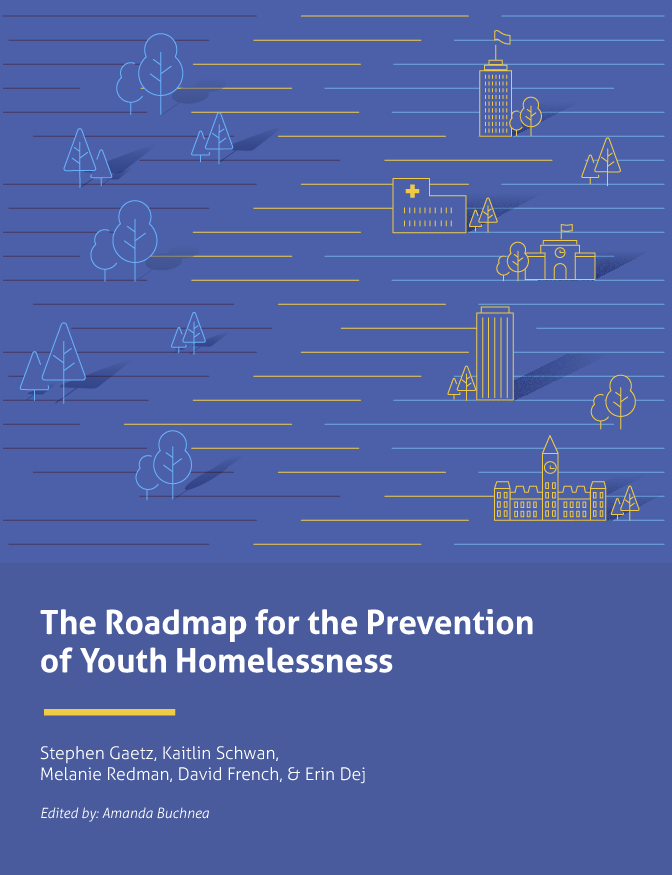The desire to address inequalities and exclusionary practices within homelessness policy led Wales to become the first country to attempt to fully reorient homelessness services toward prevention and to make preventive services universally available. At the heart of the Welsh approach is a legal duty that requires municipal authorities to assist anyone who is at risk of homelessness, or who has become homeless, and seeks help. A key question for us is whether and how such a prevention-based policy and practice can be adapted to the Canadian context, and, in particular, how can it contribute to our policy and practice toolbox for preventing youth homelessness.
To help us answer this question, Making the Shift Youth Homelessness Social Innovation Lab, co-led by the Canadian Observatory on Homelessness (COH) and A Way Home Canada (AWHC), partnered with Bridgeable, a Toronto-based service design consultancy. For the next four months, the project team will use a human-centred, design-based approach to prototype and test service elements of the Welsh Duty to Assist model and make strategic policy recommendations to improve the effectiveness of the policy moving forward.
 The adaptation of Duty to Assist is one of the pillars of our recently released Roadmap for the Prevention of Youth Homelessness. We see Duty to Assist as representing an opportunity to radically shift away from how we currently respond to youth homelessness—an approach that ignores prevention and places young people, their families, and communities in harm’s way before they are offered any reasonable supports to end their homelessness.
The adaptation of Duty to Assist is one of the pillars of our recently released Roadmap for the Prevention of Youth Homelessness. We see Duty to Assist as representing an opportunity to radically shift away from how we currently respond to youth homelessness—an approach that ignores prevention and places young people, their families, and communities in harm’s way before they are offered any reasonable supports to end their homelessness.
By providing the right assistance early on, we can stem the flow into homelessness and reduce the ensuing damage and hardship that results. So, how do we get there?
Our work with Bridgeable will allow us to take the conceptual work in the Roadmap and test elements of it in real time. Close at hand to provide input and lessons learned from the Welsh context is Peter Mackie, the lead architect of the Welsh policy. The timing of this project is important, as it suggests a potential prevention-based strategy to actualize the soon-to-be-legislated “right to housing” in Canada.
The City of Hamilton has graciously agreed to be the home base for the prototyping phase of the project. Their high-functioning systems plan, cohesion across the youth sector, and progress toward integration is a solid foundation for prototyping service supports. With a strong endorsement from the Street Youth Planning Collaborative and the Hamilton Regional Indian Centre, the project team has felt welcomed and supported to lean into this important and ground-breaking process.
We sat down with Chris Ferguson, Founder of Bridgeable, to learn more about why his organization decided to partner with us and what human-centred design can contribute to policy design and development.
Can you tell us what attracted you to Making the Shift?
Chris: In December of 2018, Bridgeable made a commitment to reducing youth homelessness. Through some preliminary research, we came across the innovative work of the COH and AWHC. Their commitment to connecting theory and practice was refreshing and consistent with the work we do with our clients. In fact, Bridgeable was founded on the idea of bridging the gap between knowing and doing, which means connecting the dots between policy, strategy, and implementation. Put another way, we’ve found that organizations often find it difficult to translate the impact policy or strategy might have on the lives of the people who use their services and the frontline staff who deliver them.
In the case of this Duty to Assist project, we are interested in similar questions: What happens, from a service perspective, when a right-to-housing legislation becomes law? What changes for youth who may need to access housing-related services? How do service providers need to adapt their roles to respond to this new legislation? One way to answer these questions is by simulating the change to see what will happen when Duty to Assist is law—that’s where design can help.
Can you talk a bit more about what you mean by simulating the change?
C: When you design something, like a chair, you’re forced to think through the details: What dimensions will it take? What will it be made of? Is the shape comfortable to different body types? It is only by making something, in other words, simulating the real thing, that you can understand how it works in practice. The same principle holds true when you design services. It’s only by prototyping a service that you learn about how it will work in the real world. That’s the approach we’ll be taking with translating this policy—we’ll prototype the service elements associated with Duty to Assist and run them in the real world with youth and frontline workers. The feedback we receive in the field will be used to improve the policy directives associated with Duty to Assist.
When you design something, like a chair, you’re forced to think through the details: What dimensions will it take? What will it be made of? Is the shape comfortable to different body types? It is only by making something, in other words, simulating the real thing, that you can understand how it works in practice.
We have carefully structured the project so that youth have multiple opportunities to shape the process, give an account of their lived experience in a setting and format that they feel comfortable with, and co-design solutions that centre their needs. The project team has already begun training to better understand how homelessness intersects with various forms of oppression, including homophobia, anti-Indigenous racism, sexism, and genderism. This knowledge is essential for accurately documenting the stories of youth who may have experienced trauma and to better understand how service supports need be designed to accommodate their specific needs.
Anything else you’re looking forward to about the project?
C: Another reason we’re doing this work is that we would like to test a few hypotheses about the role of human-centred design in the policymaking process. First, we believe design is useful for identifying the unintended consequences of a policy before rolling out. Second, simulating a service can help prepare service providers for implementation. Third, design objects can be used as cultural artifacts to help stakeholders challenge their deeply held beliefs about a particular problem or issue, which can build empathy and provoke new thinking. I think our design methods have huge potential to help shift the paradigm of service delivery for people experiencing homelessness, and I am excited to have great partners who share our purpose to make meaningful impact in the world.
--
Follow our social media accounts to get project updates this summer!
- To access Bridgeable’s accounts, visit @bridgeable on Twitter, and follow Bridgeable on LinkedIn.
- To access COH’s accounts, visit @homelesshub on Twitter, @homelesshub on Facebook, @homelesshub on Instagram, and follow the Canadian Observatory on Homelessness on LinkedIn.
- To access AWHC’s accounts, visit @AWayHomeCa on Twitter, @awayhomecoalition on Facebook, and follow A Way Home Canada on LinkedIn.


